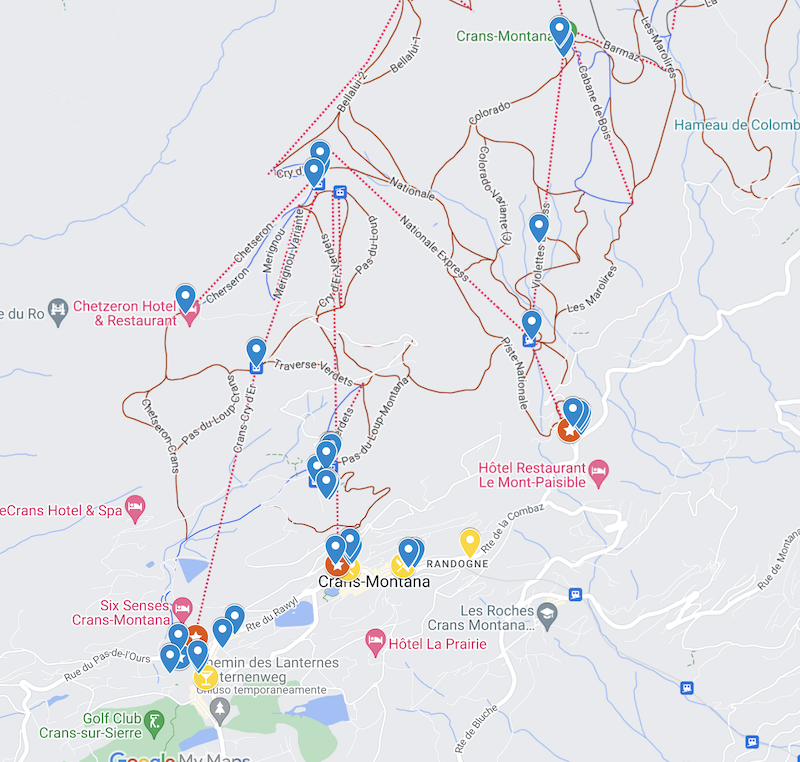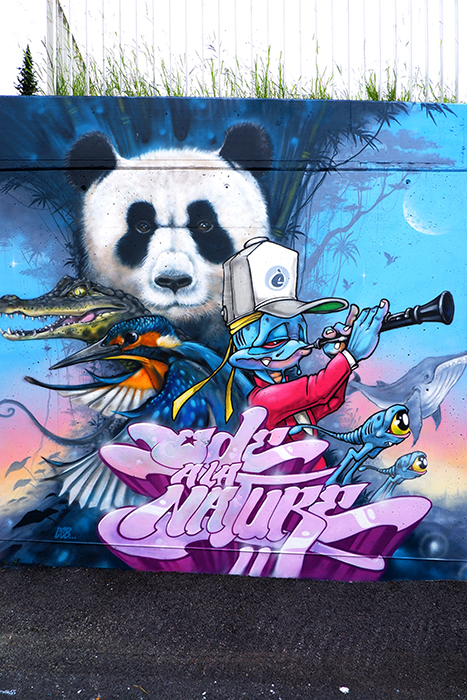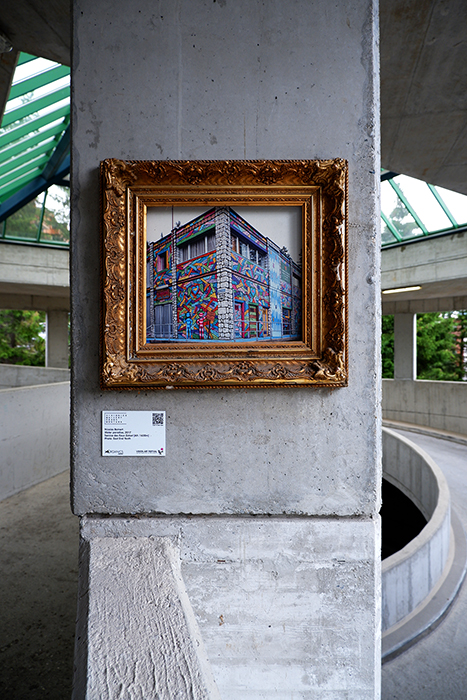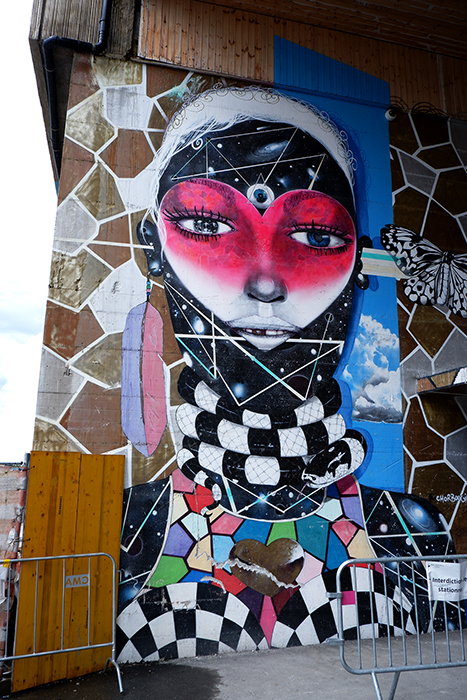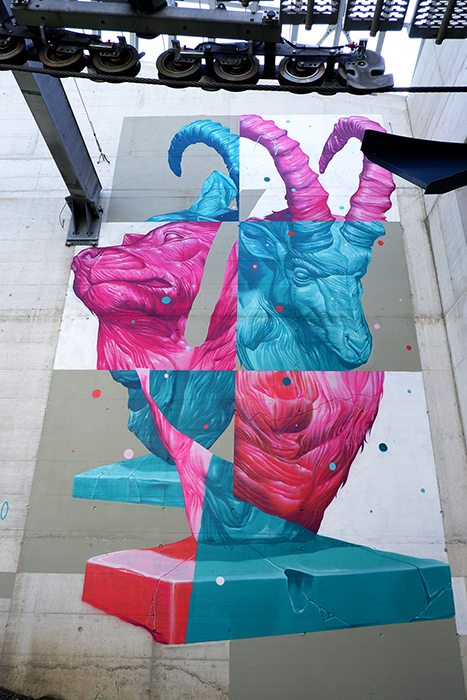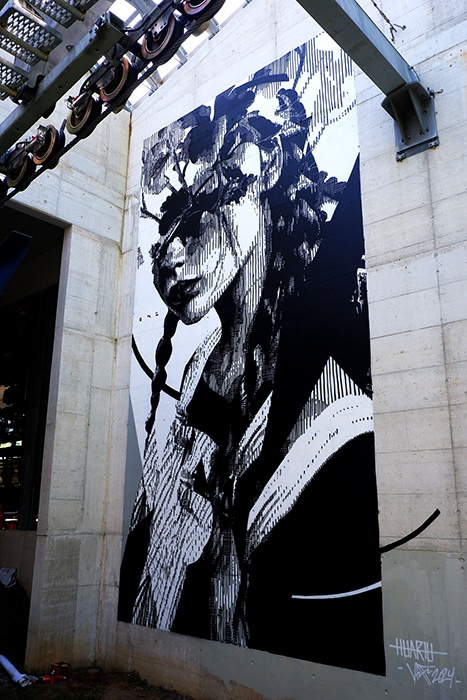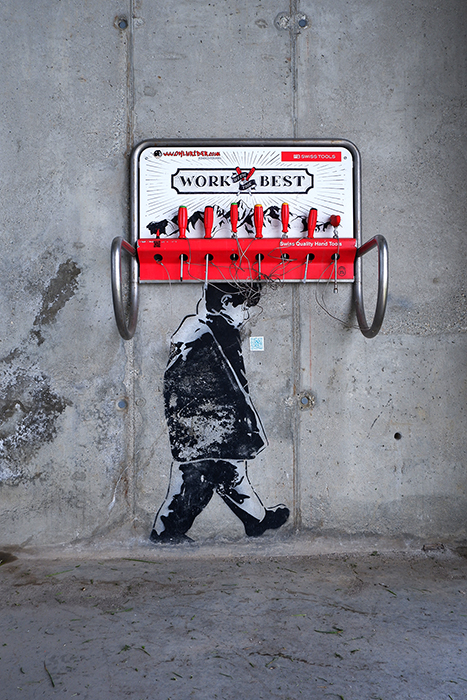Nestled in the idyllic landscape of the Swiss Alps, the picturesque town of Crans-Montana may seem an unlikely canvas for graffiti. Yet, since 2014, Gregory Pages has been curating the world-renowned Vision Art Festival, transforming the mountains surrounding his hometown into an extraordinary outdoor urban art gallery.
This unique festival invites some of the most respected names in street art to create stunning works at altitudes of 2000 meters and above. Artists bring vibrant colors to the concrete of funicular pillars, the walls of ski service stations, and various other surfaces throughout one of the world’s most famous ski resorts, as well as walls around the city.
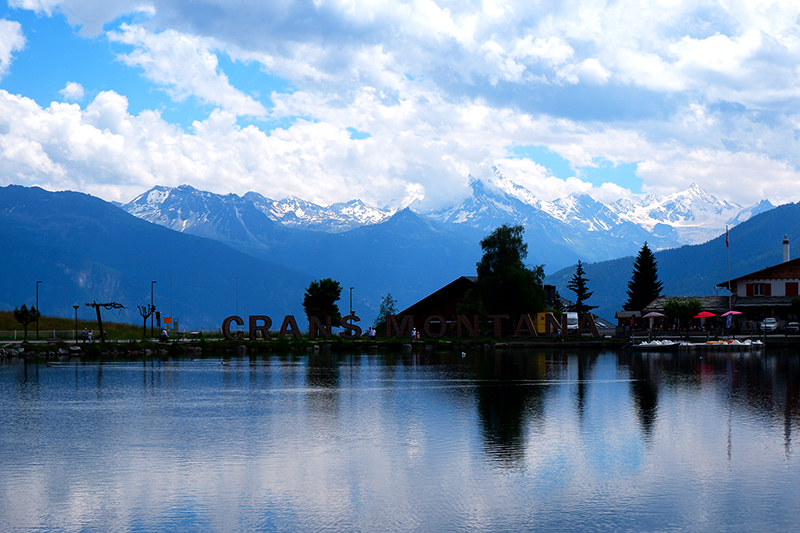
I always emphasize the importance of context in street art because, unlike a canvas that can be relocated, a mural is intrinsically tied to its setting. The Vision Art Festival offers a truly unparalleled context—the Rhone Valley, with its breathtaking landscape that has inspired artists for centuries. Traditionally urban, graffiti finds a new and unique expression in this alpine environment. Here, artists step outside their usual urban comfort zones, interacting with the natural surroundings in creative and unexpected ways.
This year, the festival’s stunning mountain landscape is not just a backdrop but also a central theme, with “Ode to Nature” as its focus. While nature has always been a recurring motif, after nine years of bringing urban art to nature, the festival’s tenth edition aims to bring nature into urban art.
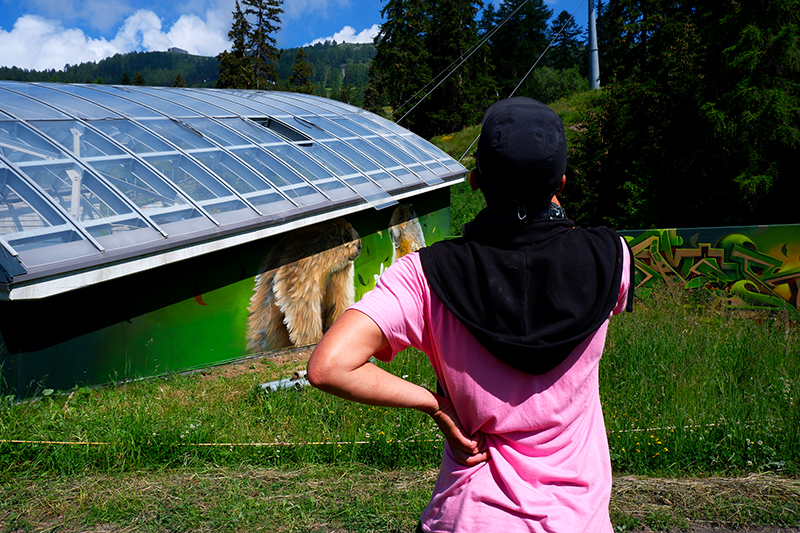
Curators Gregory Pages and Yasha Young have meticulously selected artists whose work interprets the theme of nature, encouraging them to represent local flora and fauna.
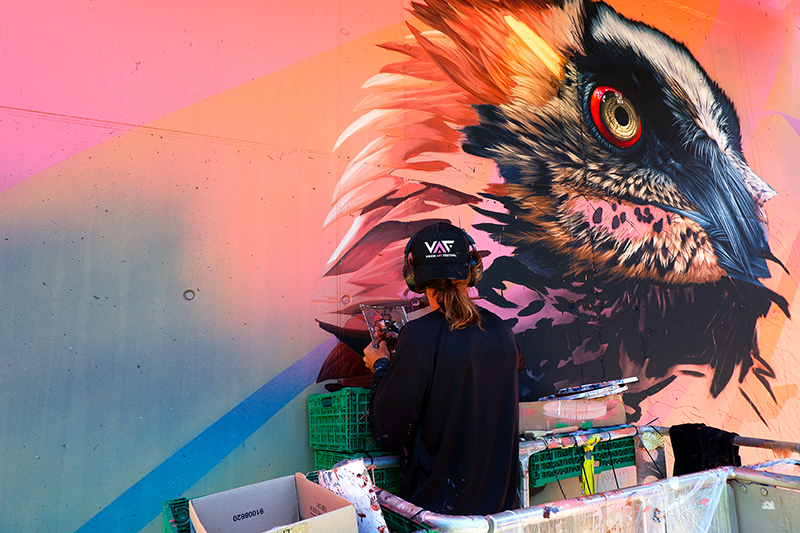
South African artist Sonny Sundancer painted an impressive bearded vulture for Vision Art Festival 2024.
Lastly, the theme of nature was also the focal point of a panel discussion I participated in with Gregory Pages and Cédric Mabillard, the festival’s artistic director. This event was hosted by the contemporary art center Fondation Opale, which houses a remarkable collection of Aboriginal art among other excellent temporary exhibitions (highly recommended to visit!).
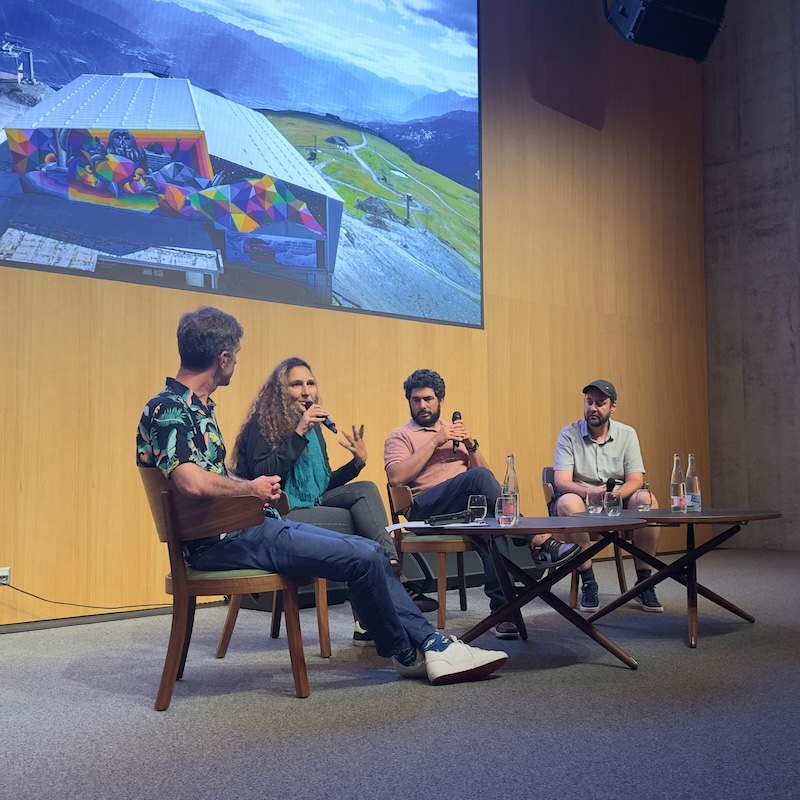
During the panel, we explored contemporary discussions on nature, including climate change, sustainability, greenwashing, recycling, and over-consumption, highlighting how street art intersects with and reflects these pressing environmental concerns.
But now, put on your hiking boots; it’s time to start exploring!
Vision Art Festival: Murals Around Crans-Montana
Despite their motto, “Taking Urban Art to New Heights,” some murals from the Vision Art Festival are found around the city of Crans-Montana -still, at an impressive 1500 meters. The town is small, but a free bus (number 431) runs along the main road, next to which you’ll find various murals.
Starting near the station, you’ll find three murals side by side. The first, created in 2018 by French artist Mantra, features a highly realistic representation of local butterflies. Much like an entomologist, Mantra transforms urban spaces into detailed studies of nature, often featuring butterflies encased in what appear to be vintage specimen boxes. Mantra’s unique style bridges the gap between urban art and natural history, creating captivating pieces that invite viewers to appreciate the beauty of both, as the Vision Art Festival has done for the past 10 years.
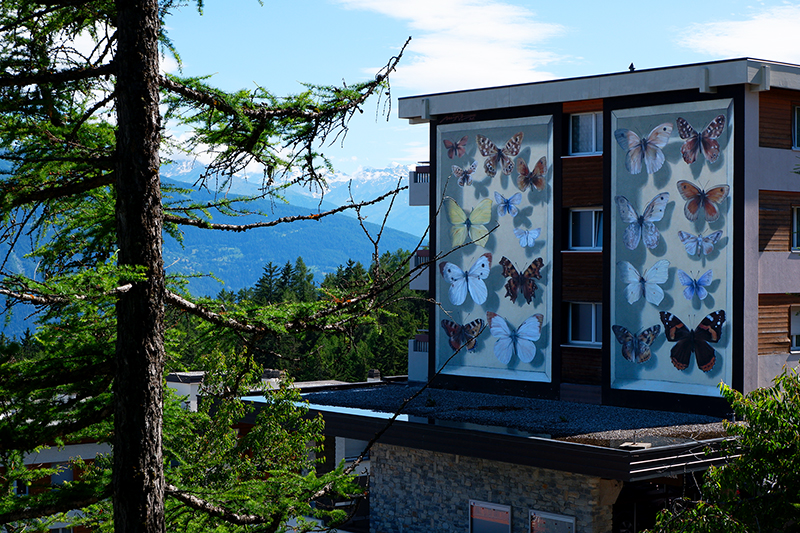
Under Mantra’s mural, Australian artist Alex Sugar has created a piece inspired by the 2024 festival theme, Nature. Alex’s work, often inspired by native fauna and flora, blends realism with occasional cubist and cartoonish elements.
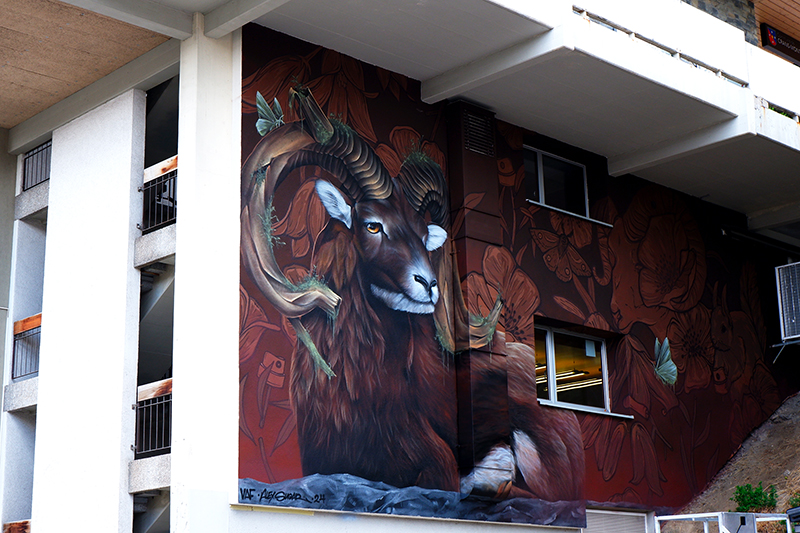
Opposite these two murals is another created in 2024 by Chinese street artist Nut, known for his iconic ceramic murals. Nut revolutionizes traditional blue and white porcelain, known as qinghua, which originated in China between 609 and 1279 during the Tang and Song dynasties. His mural features the Valais snow lynx, typical of the area, depicted with precision and finesse, making them appear almost lifelike.
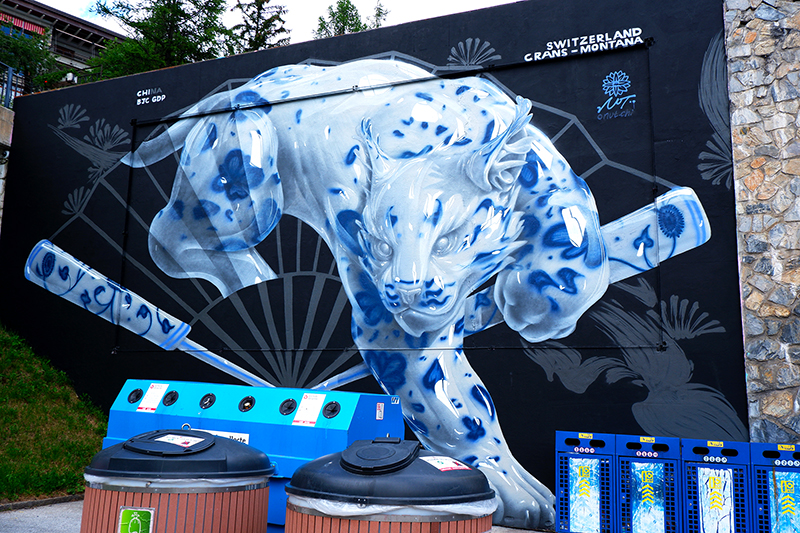
Walking towards the city center, you’ll find three more pieces next to each other. The one visible from the main road is an abstract composition by Italian artist Moneyless, known for his geometric abstract art that blends graffiti and fine art. His work often explores the relationship between the natural and the artificial, using clean, precise forms to contrast with the organic environments where they are placed. This unique approach challenges traditional notions of graffiti, transforming urban spaces with his minimalist yet complex designs.
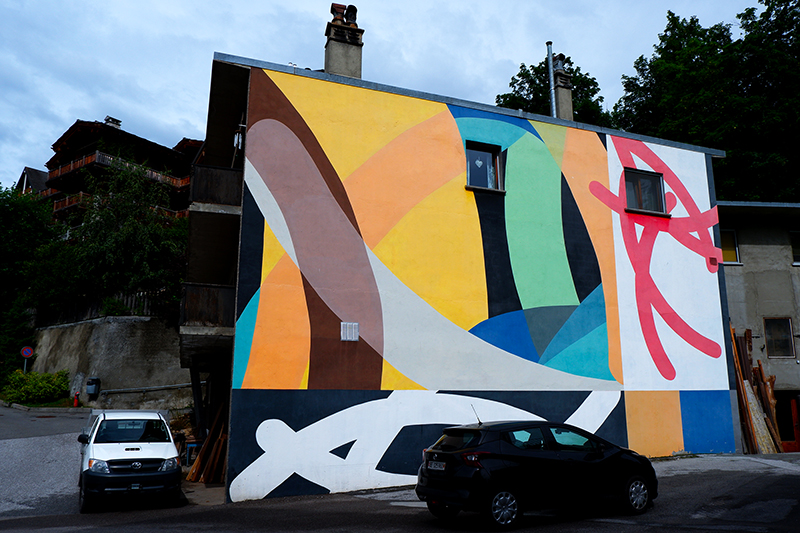
Opposite it, Swiss graffiti artist SEYO, a pioneer of graffiti in Europe, spelled out the theme of the 2024 edition with a colorful composition representing endangered species. Born in the 1960s, SEYO has been exploring calligraphy and metaphysical landscapes for over 40 years. His work blends gravitas with humor, reflecting the energy of breakdancing, graffiti, and modern rap, and celebrating the ephemeral beauty of the moment and the cycle of life.
Looking up, you’ll see “Alex and Populus Tremola” (2023), a beautiful mural by Italian artist Fabio Petani and the South-American artist duo Amazonas. The mural portrays Brazilian street artist Alex Face surrounded by lush vegetation, including the European aspen painted by Fabio Petani and actual vegetation from the nearby woods.
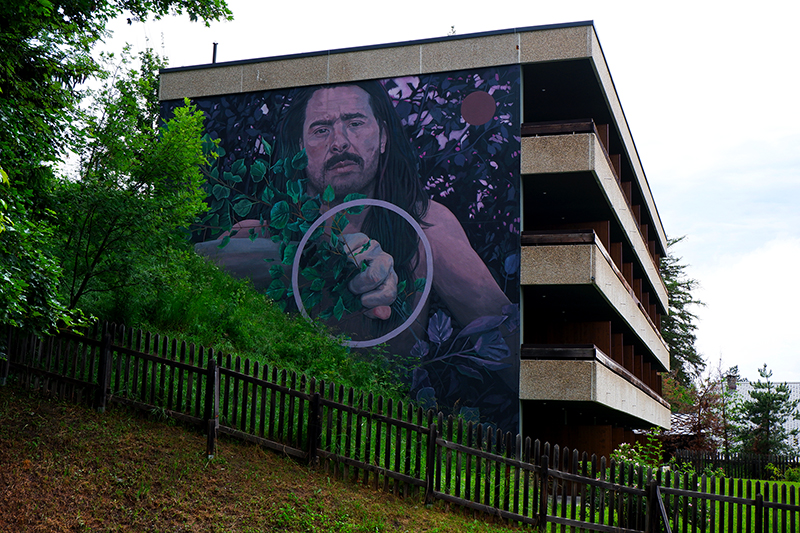
This mural was created for the 2023 festival edition “We 2 Are 1,” where each piece is a collaboration between two artists (in this case, three) who had never worked together before. Each pair selected their own theme, with the overarching goal of achieving perfect harmony in their combined styles.
Keep walking on Route du Rawyl until it becomes Rue Centrale, as there are more murals to discover in this area of Crans-Montana. First up is a mural by Swiss artist Rylsee, in which the artist highlights the touristic vocation of Crans-Montana in a satirical way.
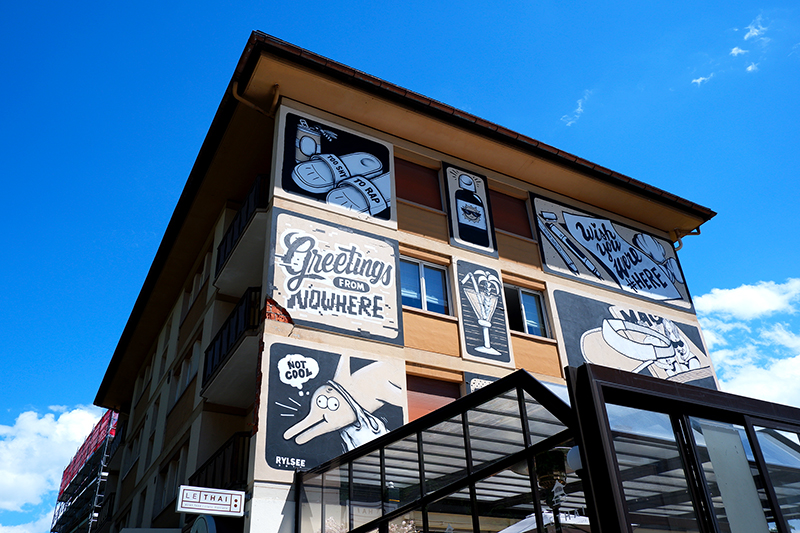
Next to it is an 80-meter long mural by American artist Greg Mike, featuring his iconic style inspired by cartoons and the Surrealist Pop Art movement. Obsessed with the vibrant energy and precise lines of mid-century American cartoons, he began merging these influences on street walls by his early teens. Greg Mike is now known for his vivid, Surrealist Pop Art pieces featuring mischievously twisted characters. His work, marked by bright explosions of color, creates a uniquely captivating and unsettling world.
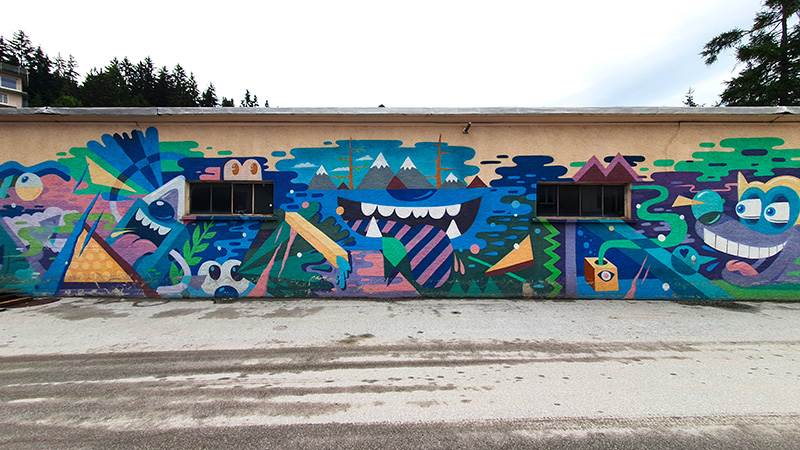
Towering over a green park nearby, there’s a beautiful mural by Moroccan artist Mohamed L’Ghacham, who painted an intimate, homey scene of several women preparing fondue, the typical dish of melted cheese. Drawing from a background in graffiti, Mohamed’s work is primarily figurative with realistic elements and Impressionist touches, depicting scenes from everyday life infused with the visual language of late 20th-century photography.
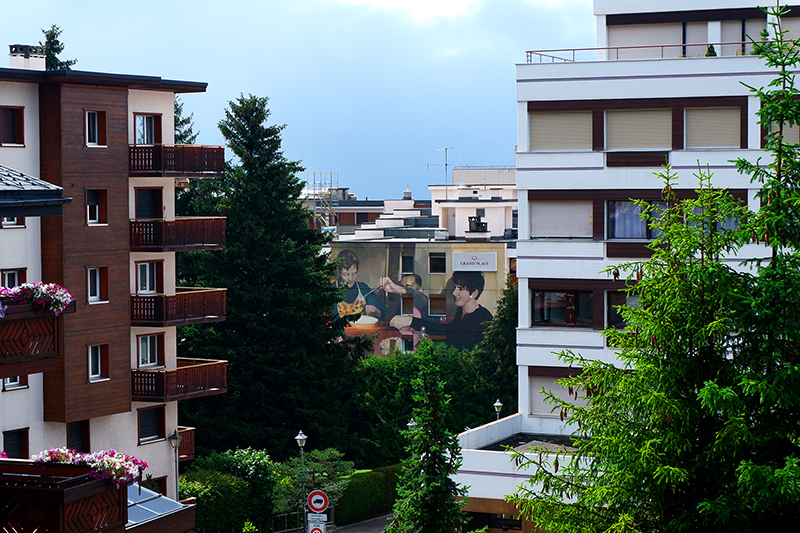
Still in this corner of Crans-Montana, there are two more works produced in 2024. The first is by Swiss graffiti artist JAZI, who represented the theme of nature through a background made of big waves of water, which nourish the plants and are essential for life on our planet. In the foreground, he depicted funny bees, crucial to the balance of nature.
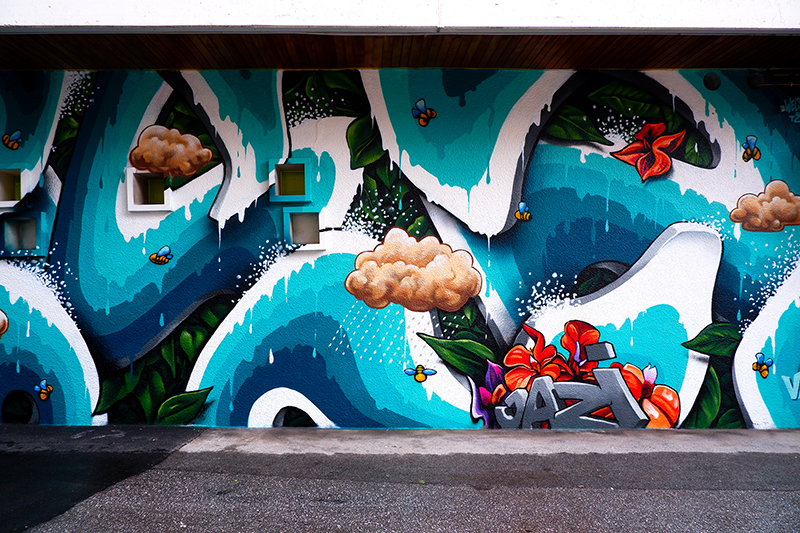
Next to Jazi’s piece, you can find a mural painted by Claire The Art Shelter, the winner of this year’s graffiti battle, a tradition at the Vision Art Festival. This is Claire’s first wall, and it represents a woman surrounded by lush flowers.
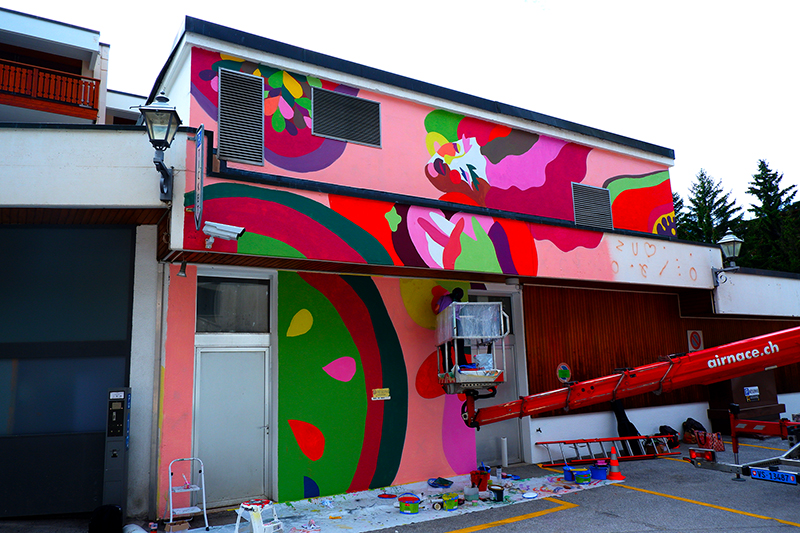
Lastly, head to Parking Chetzeron, where the Vision Art Festival team curated a jam featuring over 100 artists, whose pieces are scattered throughout the five floors of the covered parking.
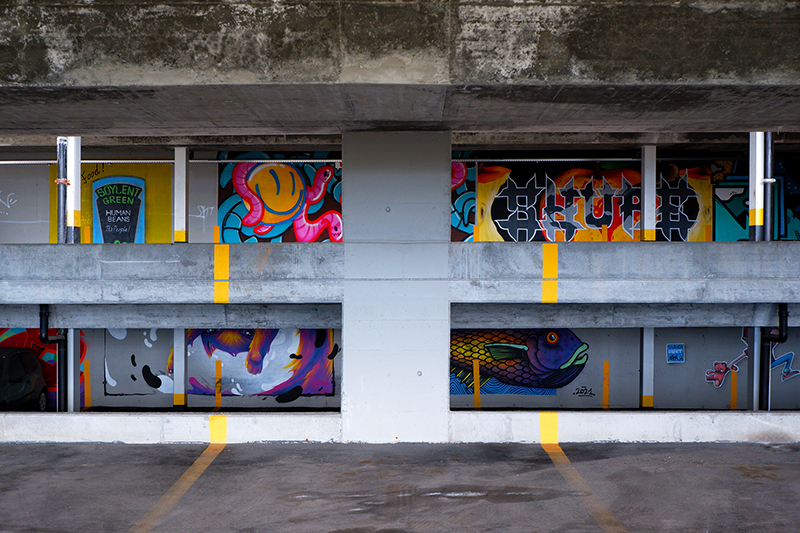
On the rooftop, you’ll find a dynamic piece by Felipe Pantone. Pantone, an Argentinian-born artist, is renowned for his vibrant, futuristic artworks that merge elements of graffiti, graphic design, and kinetic art. His signature style features bold geometric patterns, black and white contrasts, and vivid color gradients.
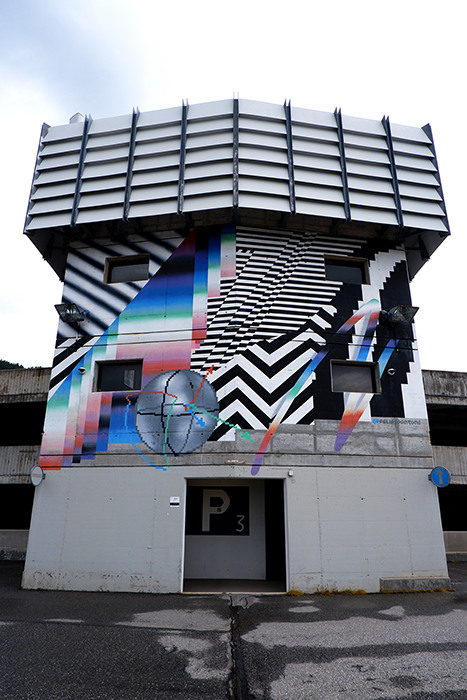
Vision Art Festival: Murals along the line Crans – Merbé – Cry d’Er
This parking area is where you can take one of the three “telecabins” (cable cars) that will transport you to discover Europe’s highest murals. Many of the murals curated by Vision Art Festival are indeed at high altitudes. While some require expert hiking (which isn’t for everyone, especially not for me), most are accessible by simply riding the cable cars, as they are painted on the concrete pillars and walls of the stations.
These structures are central to the visitor and resident experience, and it was observing these concrete blocks immersed in nature that gave Gregory Pages the idea to start the festival.
When the wild idea of the Vision Art Festival came up, it was right in the heart of nature. Skiing, soaking in the beauty of the Imperial Crown, with white snow, blue skies, and sunshine all around, suddenly there was this huge grey cement wall in the most pristine setting. What to do?
Destroy it? Impossible—it’s the gondola station. Another commercial? No way! The only logical solution was to paint it, making it blend into nature.
And there it was—the Vision Art Festival was born out of necessity.
Gregory Pages
Let’s head to the top floor of the parking garage and board the cable car from the plaza above. This will allow you to experience what makes the Vision Art Festival truly unique: the opportunity to admire urban art in a completely new way.
Hop off at the middle station, Meubé, featuring a collaborative mural by Spanish artists Slim Safont and Manolo Mesa, who participated in the 2023 “We 2 Are 1” edition. Their collaboration is seamless, integrating their pictorial styles on a large scale. Nil Safont combines a figurative, realistic pictorial language with a neo-impressionist character, while Manolo Mesa’s current study of ceramics highlights cultural resistance to globalization and values traditional craftsmanship, creating timeless sensations that bridge past memories with the present.
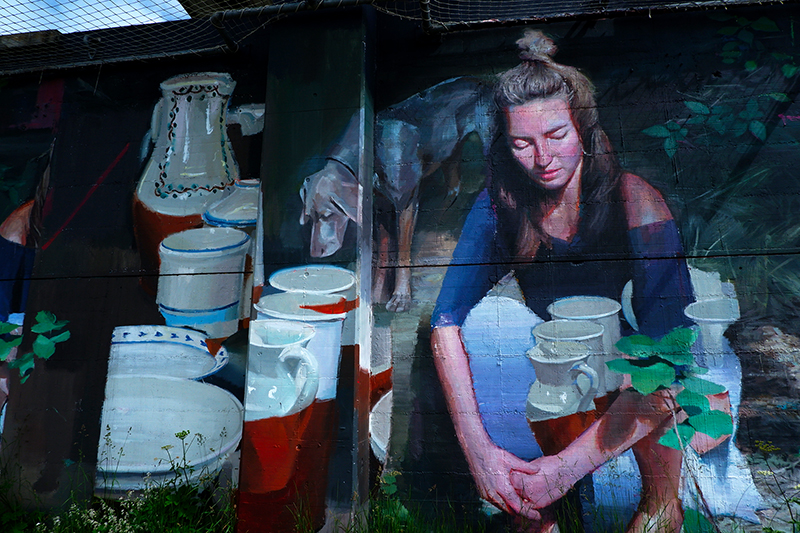
Continue your journey on the cable car to the next station, Cry d’Er, which features a mural by Okuda San Miguel from 2015. Despite some aging and partial damage, it remains beautiful, especially when surrounded by snow. Okuda San Miguel is known for his vibrant, geometric murals that mix multicolored patterns and surreal imagery, exploring themes like existentialism and the contradictions of modern life.
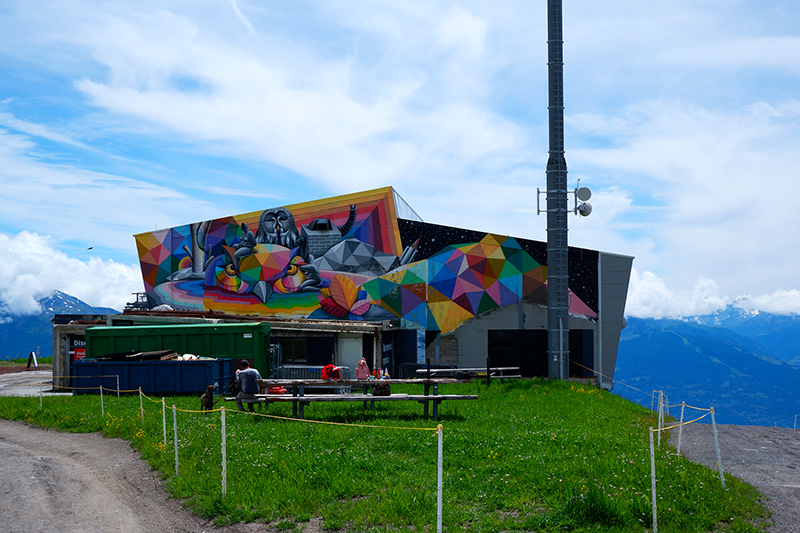
Nearby is a piece by American artist Hebru Brantley, who inaugurated the Vision Art Festival concept at 2400 meters in 2014. This mural was done as a test piece to examine how colors would react to the altitude and elements. Hebru Brantley’s narrative-driven work features conceptualized characters inspired by artists like Warhol and Basquiat. His distinctive style challenges traditional views of heroes and protagonists, reimagining modern mythology through the lens of people of color.
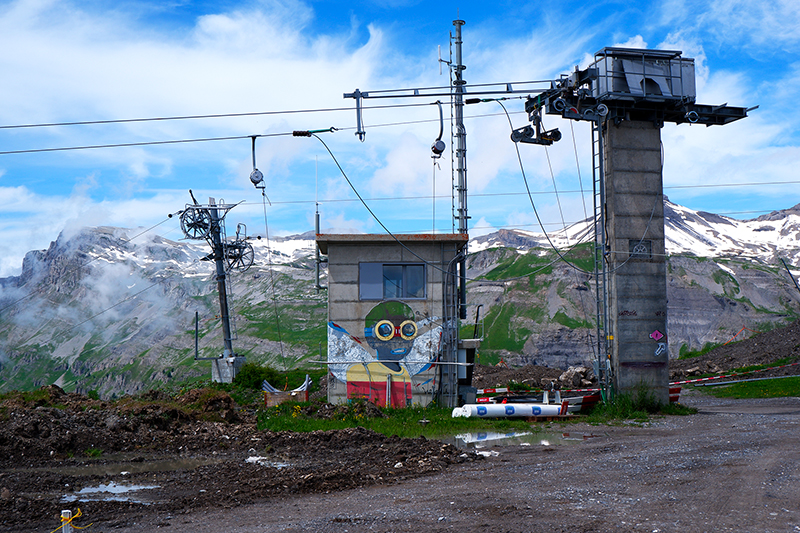
From here, take a second cable car or walk 45 minutes to Hotel Chetzeron, where you’ll find a collaborative piece by Brazilian artist Alex Senna and Greek artist Gera One, part of the “We 2 Are 1” edition. This collaboration is fascinating, with Senna’s monochromatic murals depicting intimate urban moments and Gera1’s vibrant colors influenced by glitch art.
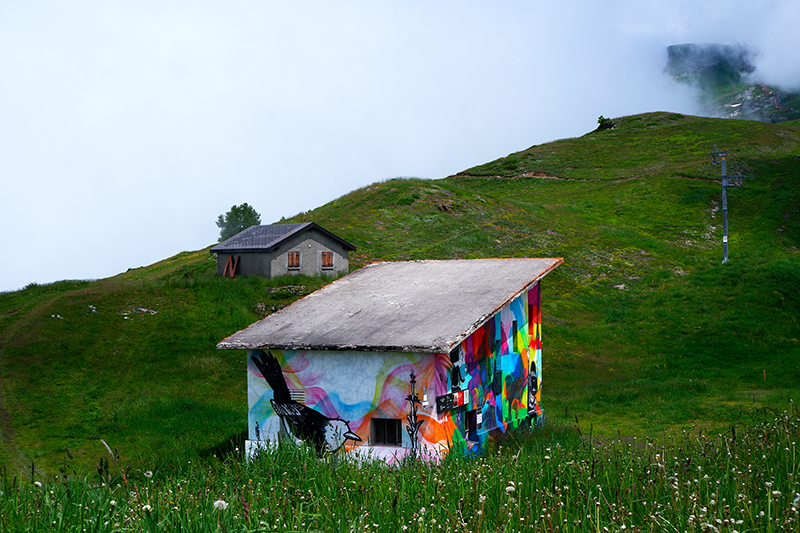
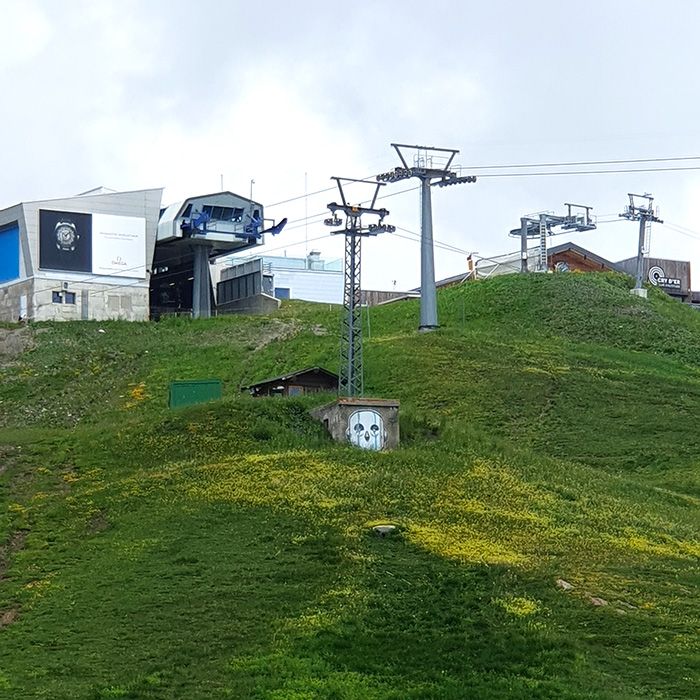
Back at the station, which -fun fact- is the same station that inspired Gregory Pages to start the festival, I pondered whether to continue the hike to see murals by Louis Masai, Astro, Leon Keer, and others. However, exhausted from the hike back from Alex Senna’s mural (since the cable cars to Hotel Chetzeron operate only from September to April), I decided to save it for next year.
I promise to take you along next summer!
Vision Art Festival: Murals along the line Montana – Arnouva
The second cable car line, along which you can find many artworks, starts from the city center near the lake. At the entrance of the station, you’ll find a piece by American artist Choor Boogie, a milestone in his “Love Land” series, inspired by Klimt and dedicated to his grandmother who, at the time, had recently passed away.
Before boarding a cable car, admire more pieces. For the 2024 Vision Art Festival, Swiss artist Lud painted two broken skis framing his interpretation of Crans Montana,
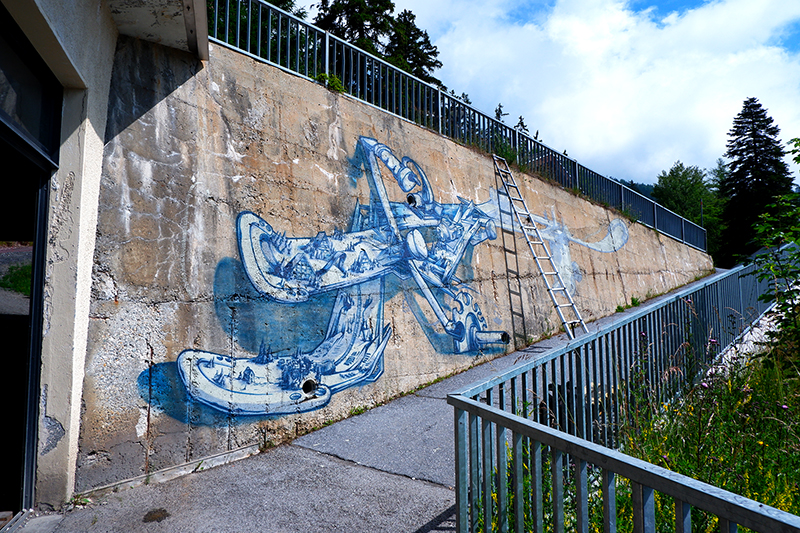
while his friend Cesar Bilavie depicted a snake hiding in nature.

In the same tunnel, at the go-cart track’s arrival point, there’s a double piece by Queen Kong, a duo from Switzerland.
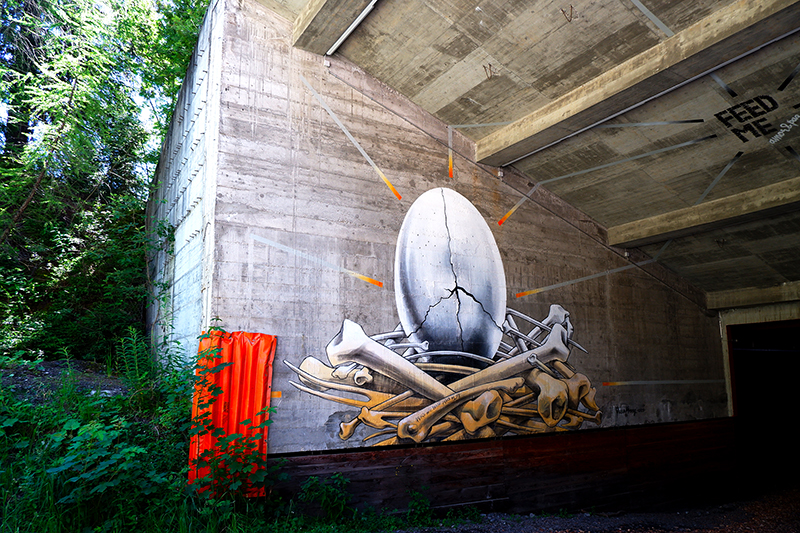
Hop onto a cable car from the station painted by Nicolas Bamert, who created colorful clouds representing his artistic universe, “Original.”
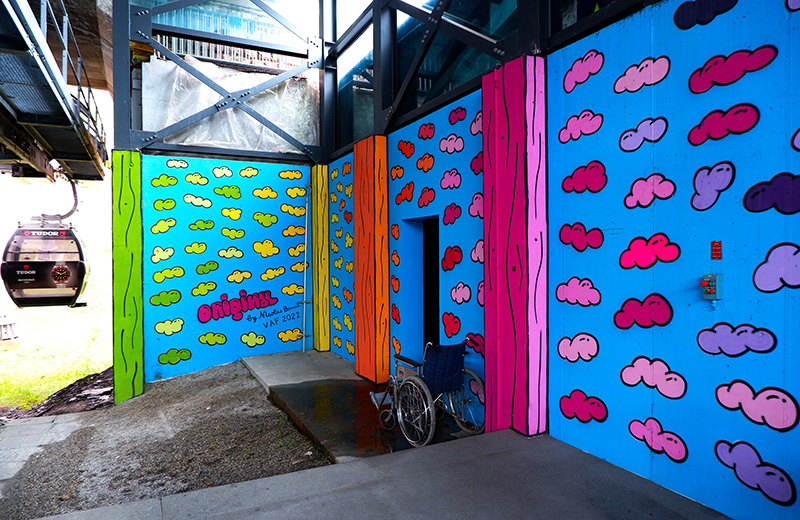
Enjoy the panoramic ride until you reach the masterpiece by South African artist Sonny Sundancer for the 10th edition of the festival. Specializing in photorealistic, brightly colored portraits of endangered animals, Sonny painted the local bearded vulture. His work blends detailed brushwork with dynamic spray paint techniques, raising awareness and funds for wildlife conservation through various initiatives and collaborations.
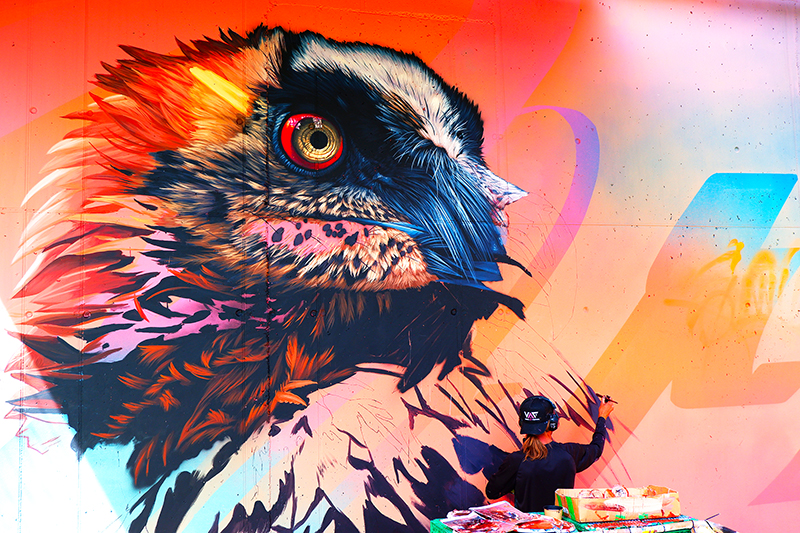
More artists in the nature-themed edition depicted local animals, such as Dutch artist Joram Roukes, who painted two goats, and English artist Curtis Hylton, who painted marmots next to some lettering.
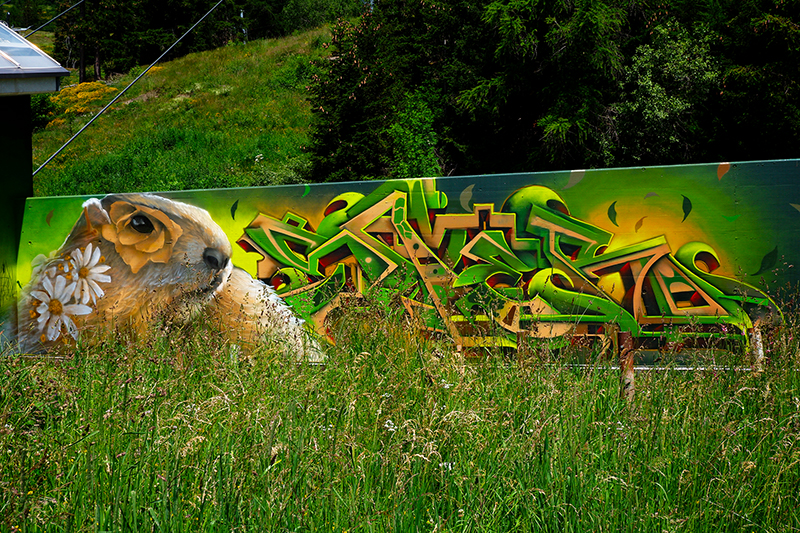
Overlooking Roukes’ piece is a monochromatic mural by Portuguese artist Huariu, featuring a girl with a flower crown, resembling a nature nymph. Huariu uses black and white with straight lines and shapes to create beautiful figurative designs.
Also part of the 10th edition is Swiss illustrator Gaëlle Vejlupek’s first big wall experience. She adapted the nature theme by representing her iconic characters, including an animal inspired by the “Dahu,” a legendary Swiss Alps creature with legs of different lengths for navigating steep terrain. Next to this character, Gaëlle drew a dragon that brings mist to the valley and a man planting stars in the sky.
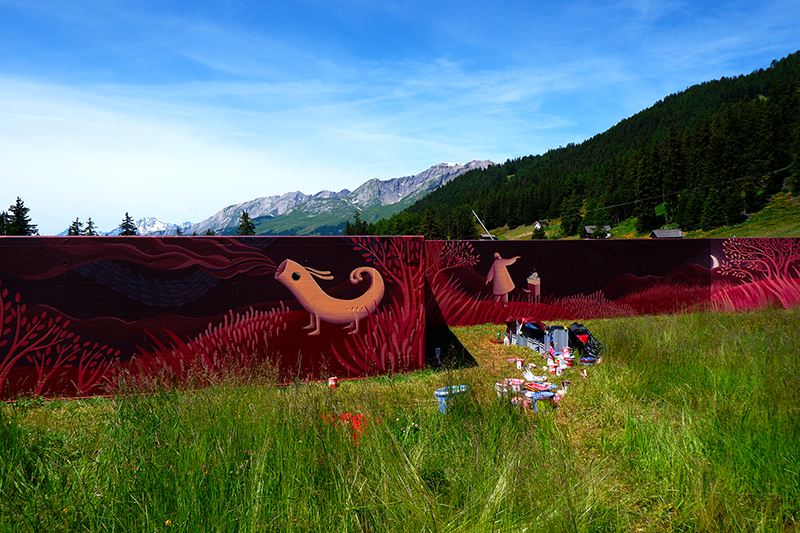
In this beautiful valley, surrounded by cows and wildflowers, you’ll also find artworks from past festival editions. With roots in graffiti culture and graphic design, the German artist duo Quintessenz created an abstract, colorful, site-specific piece manipulating shapes and patterns commonly found in architecture to alter spatial perception.
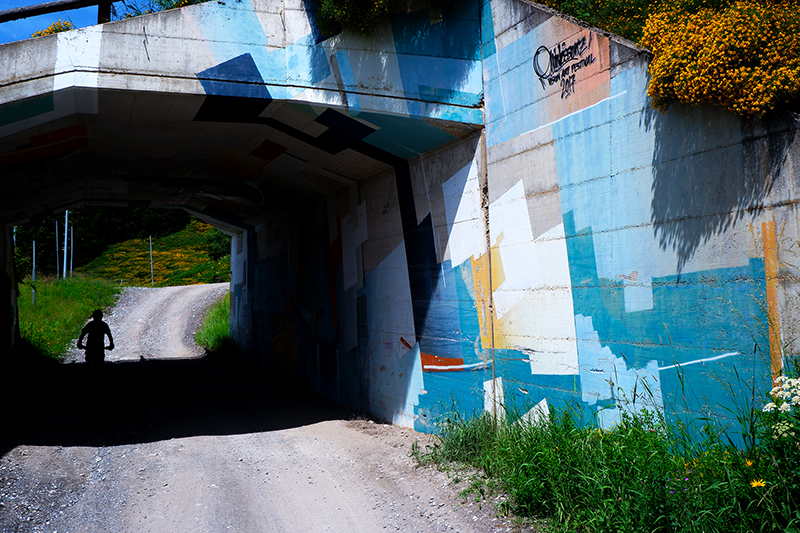
There’s also a 3D graffiti piece by Swiss street artist Sven von Büren, aka Sonic, a pioneer since the 80s. Located on a chairlift departure station, it features Sonic’s name in 3D bright turquoise on a black and copper backdrop.
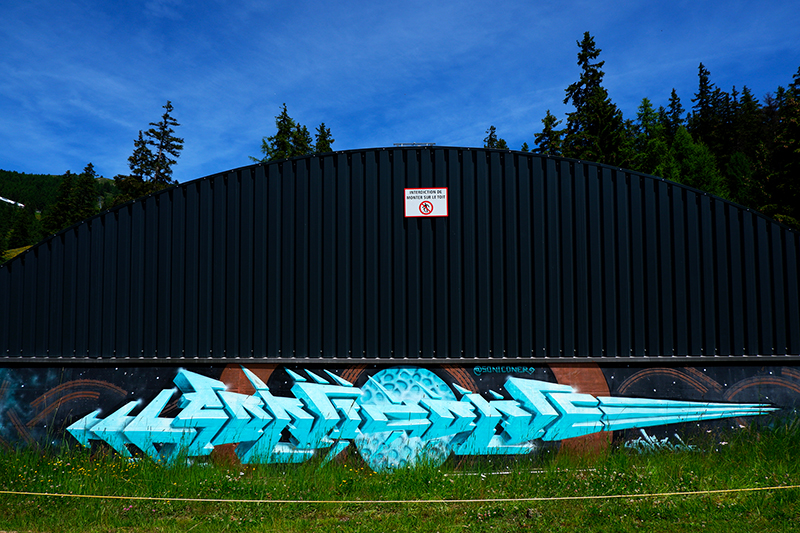
Vision Art Festival: Murals along the line Barzettes – Violettes
Take bus 431 to reach the station for the third cable car line in Crans-Montana. Before boarding the cable car, explore the parking lot next to the entrance. On the main road, you’ll find a piece by Julio Anaya Cabanding, who places his interpretations of iconic paintings in unexpected places, generating new meanings and encounters with art.
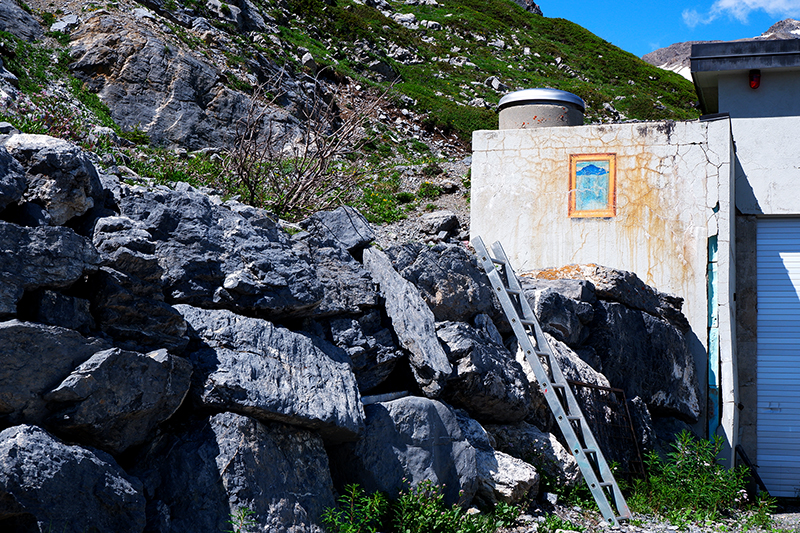
In the parking square, there’s a long collaborative piece by Felipe Pantone and Okuda San Miguel, created for the 2016 “Caprice” electronic music festival in Crans-Montana.
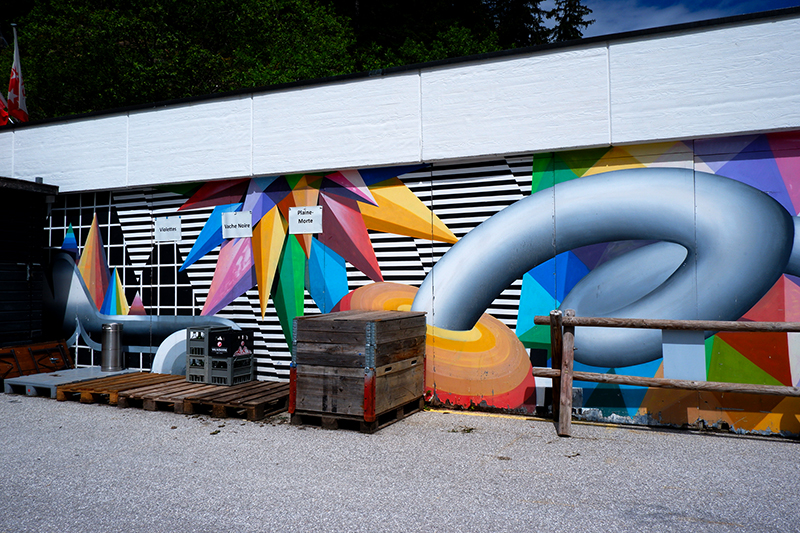
Towering over the parking square, New York artist Tom Bob has turned a mundane urban element into “Vinny the Frog,” reshaping public space with humor and fantasy.
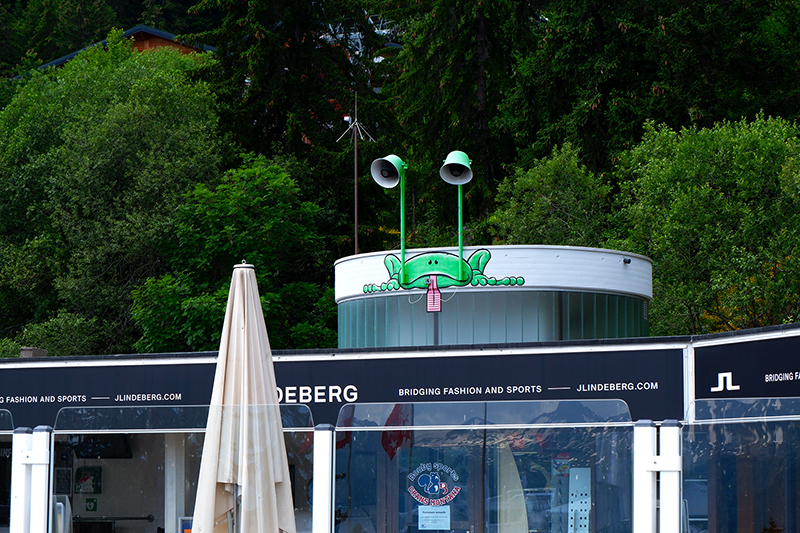
Now, take the cable car and get off at the middle station, transformed into a metro wagon by the collective Los Bitchos (Gregory Pages, Jo Vargas, and Vicent Edmond Louis). After the revamp, the line was humorously renamed “Violettes Express” because it now resembles a metro train!
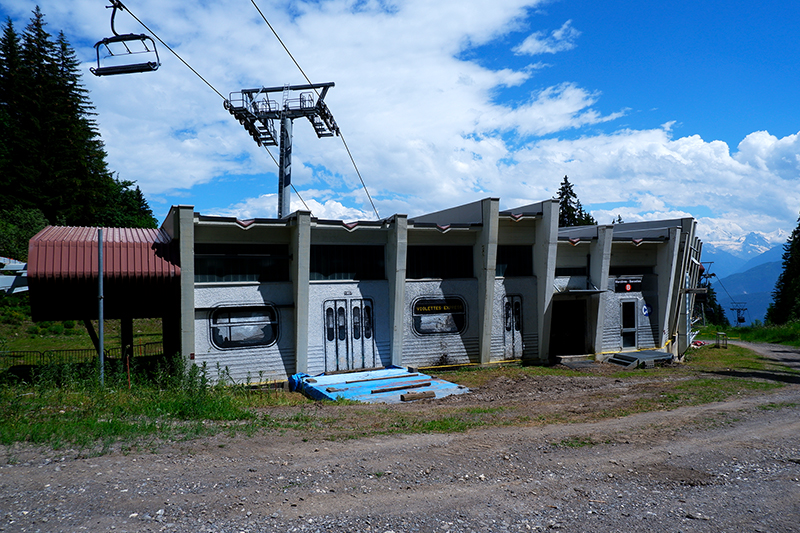
Continue your ride and enjoy the panorama while spotting a collaborative piece by Portuguese artist Nuno Viegas and Greek artist INO. Both artists, with roots in graffiti and bold, almost monochromatic styles, seamlessly integrated their work for the “We 2 Are 1” edition.
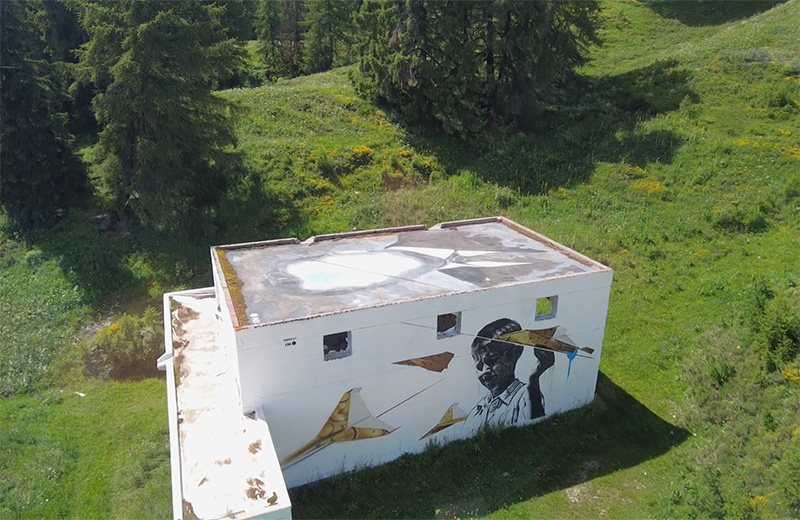
At the last station, look for stencil works by Iranian brothers Icy & Sot. Though their murals for Vision Art Festival 2015 have faded, their iconic stencils remain and in this station you can spot two of them. The piece “Let Her Be Free” depicts an Iranian woman confidently staring into the horizon, while her hijab transforms into birds taking flight. This stencil symbolizes the women’s liberation from her country’s restrictions and represents the artists’ own journey from Iran’s oppressive regime to freedom. ICY and SOT, known for their politically charged stencil art, use this piece to highlight themes of freedom and resistance, celebrating the resilience of those who fight for their rights.
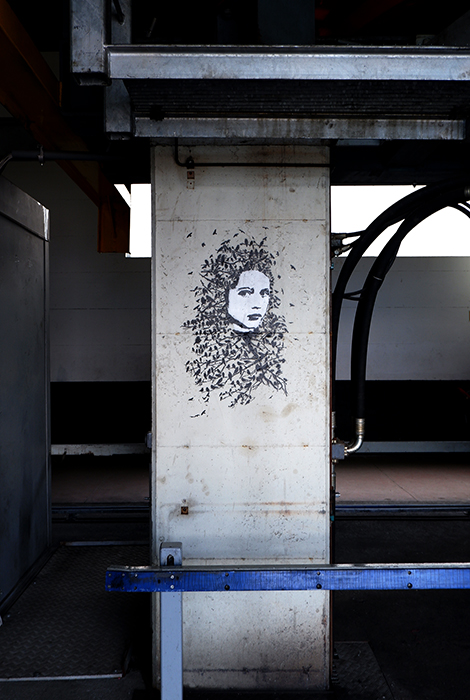
Also at this station is the “Walking Alone” boy, although access for photos is restricted. This stencil reflects the struggles of those standing against oppression, often feeling alone in their journey.
Exit the station and continue upward to find works by English artist Fanakapan, known for his hyper-realistic 3D creations of helium foil balloon graffiti.
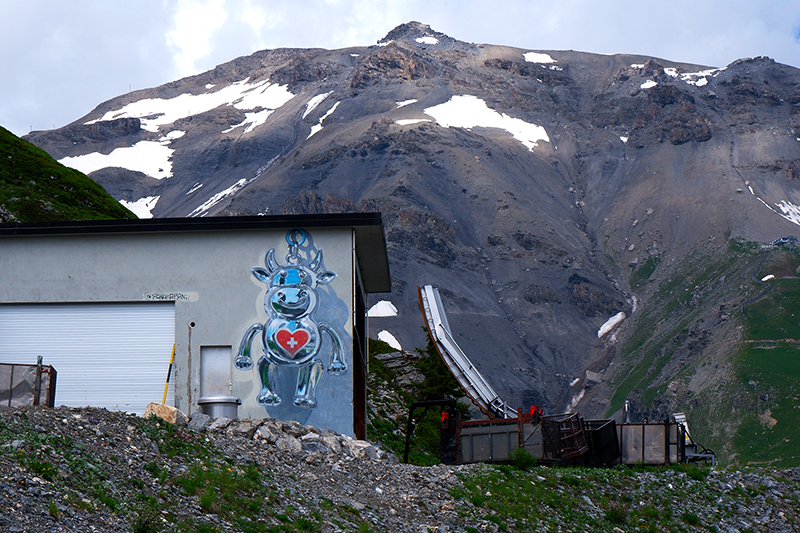
Additionally, Fanakapan created a secret piece titled “Highest Five” as a special gift for Gregory Pages’ birthday. The artwork features Gregory’s favorite number, 5, rendered with Fanakapan’s signature shadow and reflective highlights.
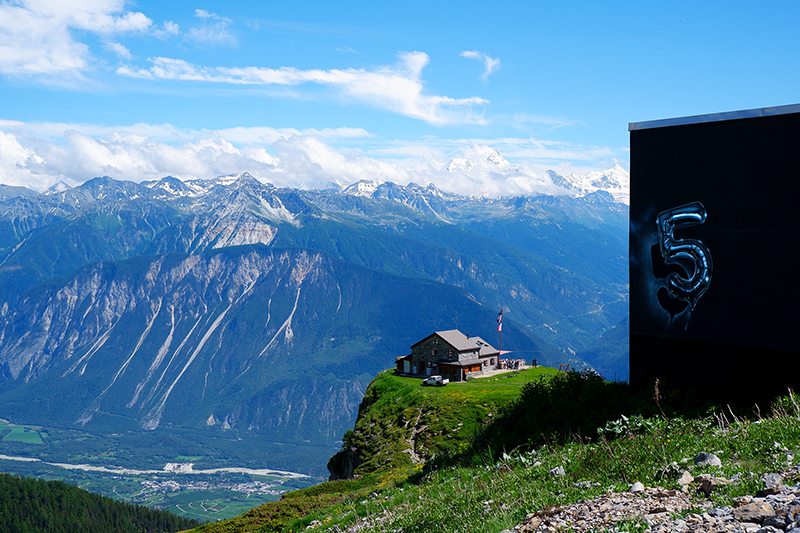
This birthday anecdote indeed epitomizes the essence of the Vision Art Festival. Beyond the outstanding art and breathtaking landscape, what truly captivates me about this festival is its warm, homey atmosphere.
The festival crew has grown around a family with generations of experience in the art field, expanding each year with many “adopted children”—the artists invited to paint. This family weaves bonds among artists worldwide, many of whom return to the Valais Valley for vacations, having experienced not just an artistic journey but also a deeply human one in Crans-Montana.
After this first experience, I feel like I too have joined this wonderful family, contributing to and enjoying the connection and shared experiences that are the hallmarks of the Vision Art Festival.
Vision Art Festival Vlog
Vision Art Festival Mural Map
